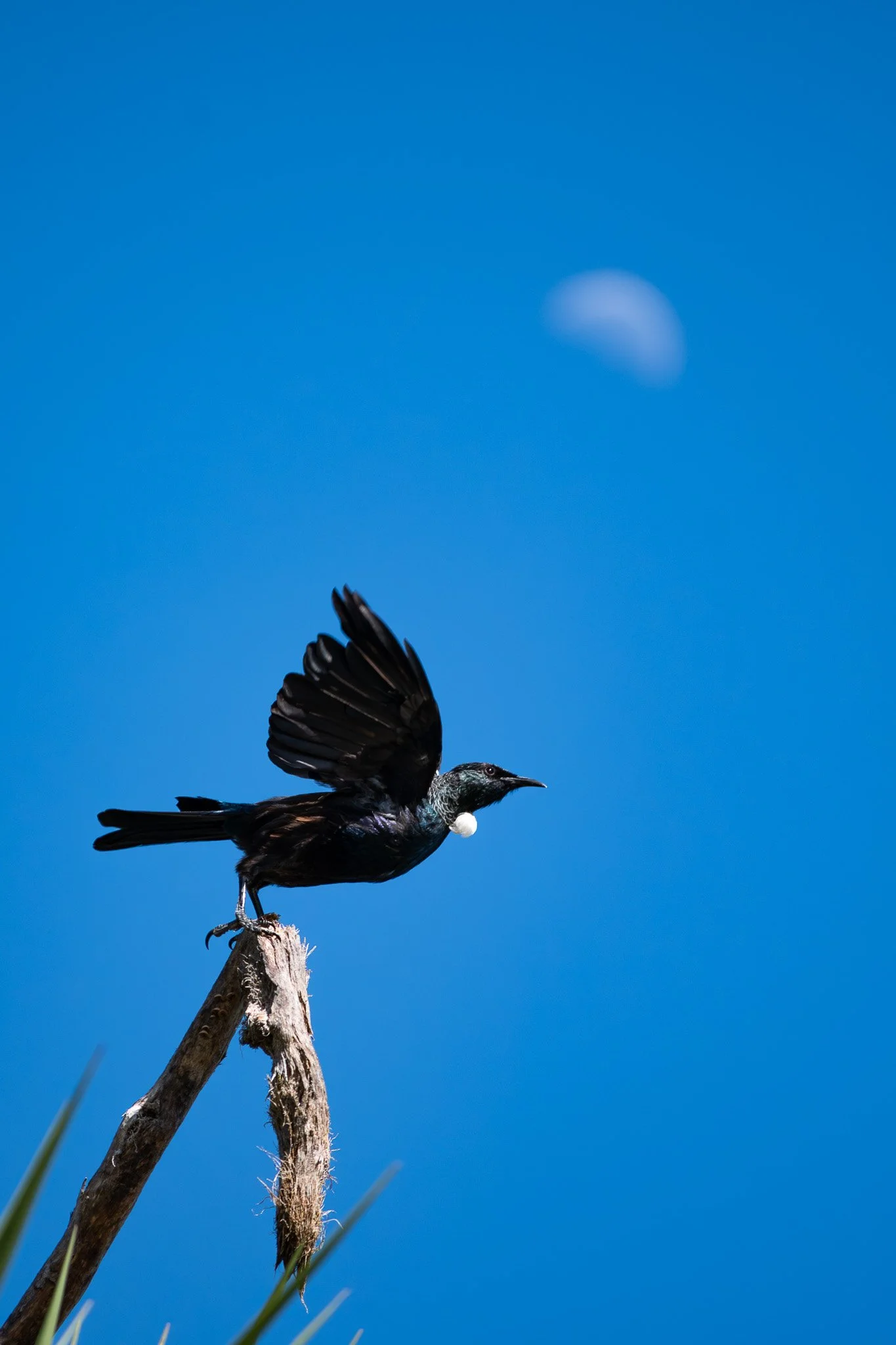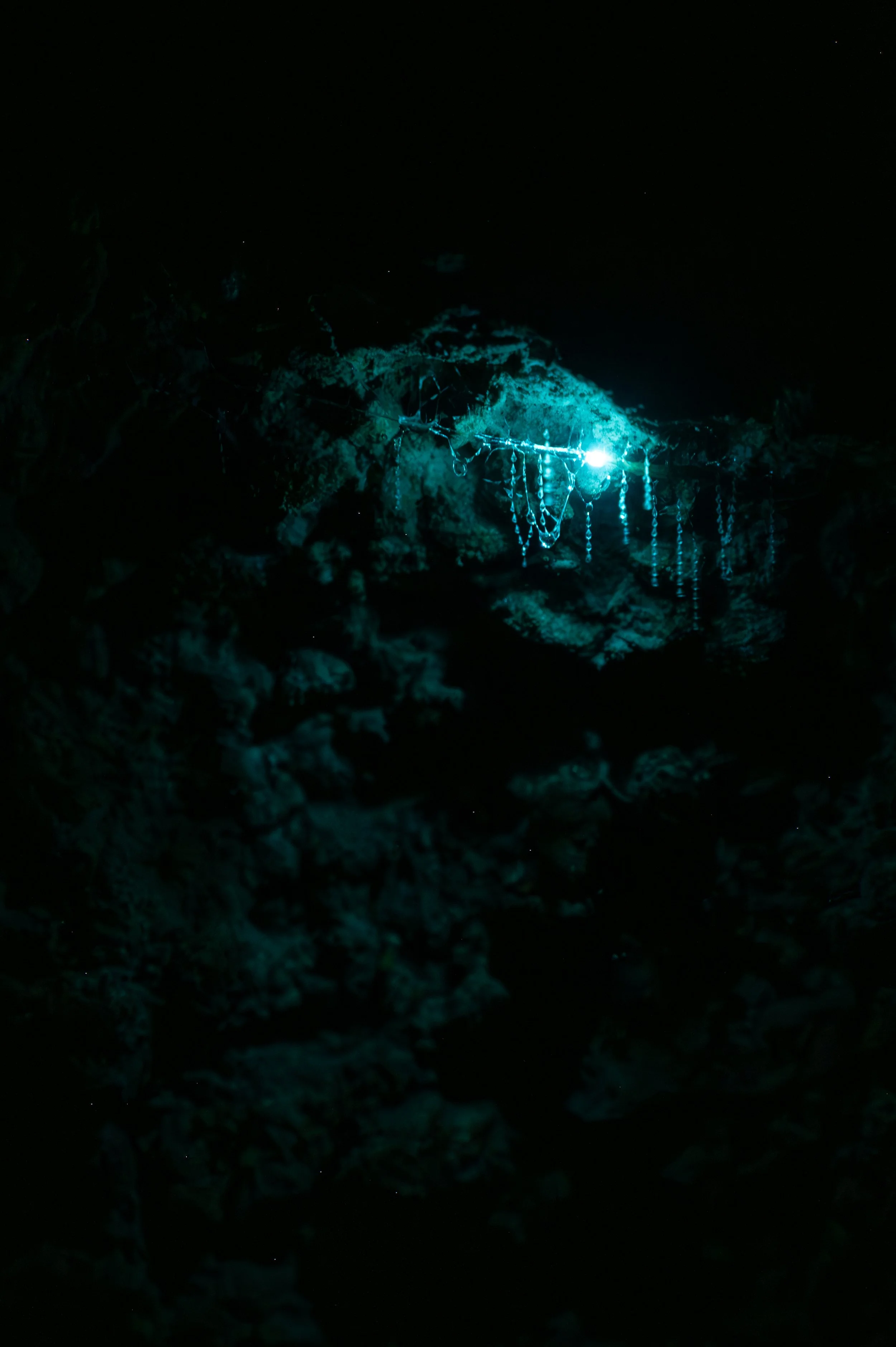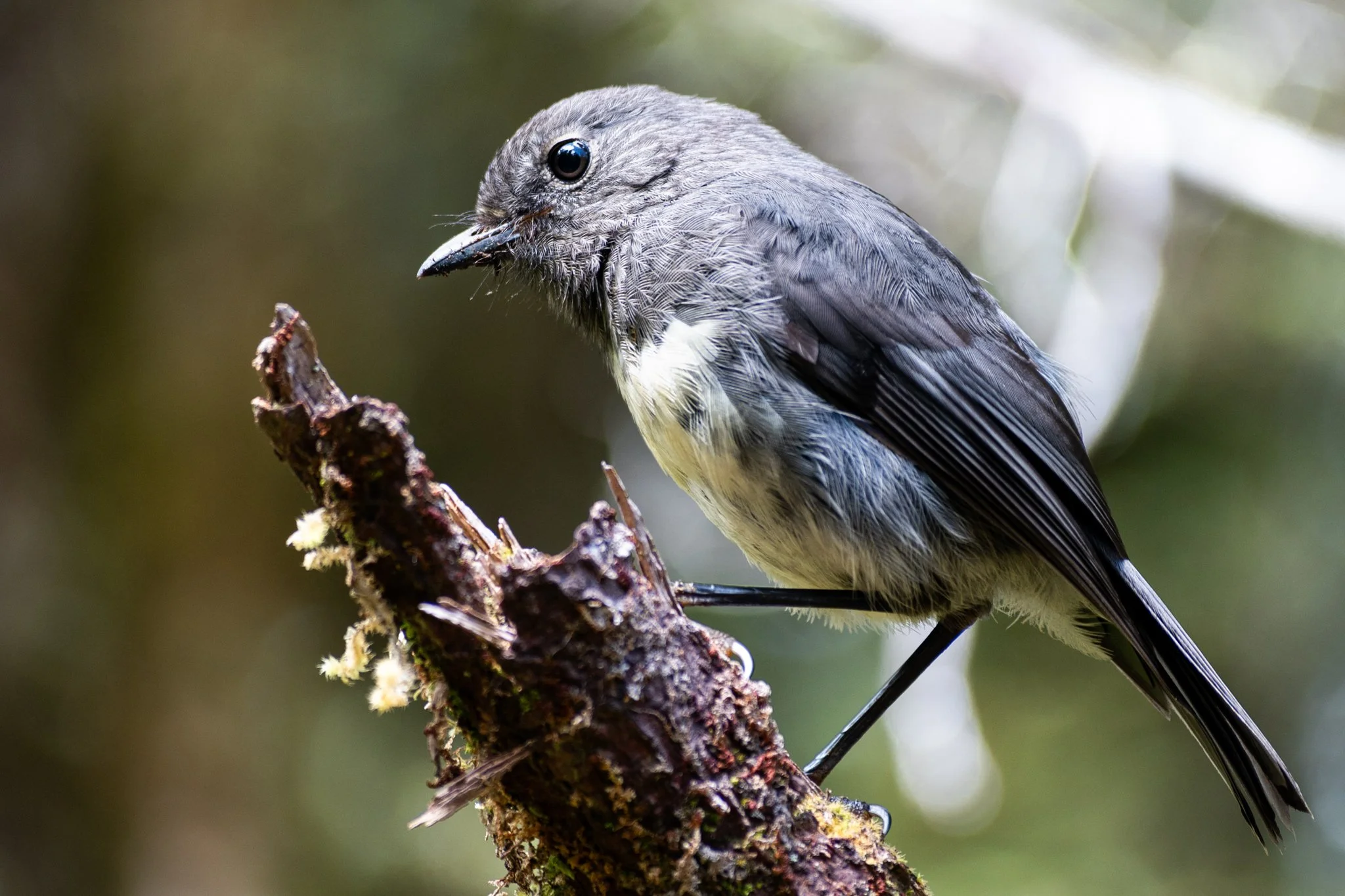WILDLIFE
New Zealand’s incredible endemic wildlife is a result of natural history and evolutionary innovation. Separated from the supercontinent Gondwana over 80 million years ago, and absent from mammalian predators, the isolated islands became a pot for unique flora and fauna.
New Zealand is famous for its unique bird species, many of which evolved in the absence of mammalian predators. This led to the development of numerous flightless birds, such as the kiwi, kākāpō, and the extinct moa…
-
Kiwi, New Zealand’s national bird, is a nocturnal, flightless bird with a long beak and a keen sense of smell, adapted to foraging in the forest undergrowth. Kākāpō, another flightless parrot, is critically endangered and known for its nocturnal habits and distinctive green plumage. The country is also home to the kea, an alpine parrot known for its intelligence and curiosity, and the tūī, a songbird renowned for its complex vocalizations and iridescent feathers.
New Zealand's sea wildlife is exceptionally diverse (with over 52% endemic species) and vibrant, featuring a rich marine life ranging from the majestic southern right whales and playful dolphins to the elusive New Zealand sea lion and a variety of seabirds like the albatross and petrels. The nutrient-rich waters around New Zealand support thriving ecosystems, including kelp forests and coral reefs, which provide habitat for colourful fish, squid, and marine invertebrates. Notably, the unique marine environments of the sub-Antarctic islands host rare species like the yellow-eyed penguin and the endangered New Zealand fur seal.
New Zealand faces significant conservation challenges due to its high rate of species extinctions, driven by habitat destruction, introduced predators, such as possums, vessels, rats and climate change. Many native species, such as the kākāpō and the tuatara, are critically endangered or extinct in the wild. In response, extensive conservation efforts have been implemented, including habitat restoration, predator control programs (Predator Free New Zealand 2050) and captive breeding initiatives.
The tuatara (Sphenodon punctatus) is a living fossil due to its ancient lineage. Despite its lizard-like appearance, the tuatara is not a lizard but belongs to a distinct order called Rhynchocephalia, which diverged from other reptiles approximately 240 million years ago. This makes it the sole surviving member of an ancient group that once thrived alongside dinosaurs.
The New Zealand fur seal (Arctocephalus forsteri) or kekeno can be distinguished from sea lions by their pointy nose and smaller size and the fact that they prefer rocky shorelines.
Kekeno spend much of their time resting on rocky shores, both at breeding colonies and non-breeding 'haul-outs' that can become quite noisy. Fur seals are vocal animals with a variety of calls used for different purposes. Males produce vocalizations during threat displays to establish dominance, while females call out to locate their pups upon returning from foraging trips.
The endemic New Zealand sea lion (Phocarctos hookeri), also known as the Hooker's sea lion, or whakahao in Māori is one of the rarest and most threatened sea lion species in the world. As apex predators, they play a crucial role in maintaining the balance of marine ecosystems.
Tūī (Prosthemadera novaeseelandiae) is known for its complex and varied vocalizations. Their songs include a mix of melodious notes, clicks, cackles, and wheezes. Each tūī has a unique repertoire, and they are known to mimic sounds from their environment, including other birds and even human-made noises.
The Paradise shelduck (Tadorna variegata), known as pūtangitangi in Māori, is a distinctive and colorful endemic waterfowl. The birds' strong pair bonds and cooperative behaviors often symbolize family unity and partnership, important values in Māori culture.
Glowworms (Arachnocampa luminosa) are bioluminescent larvae of flies native to New Zealand. Commonly found in dark, moist environments such as caves, dense forests, and overhanging rock faces they produce light to attract and capture prey.
The fantail or pīwakawaka is among the few native bird species in New Zealand that has successfully adapted to the environment significantly altered by human activity. With their friendly "cheet cheet" calls they often flit around in rapid movements, using their tail to flush out insects and other small invertebrates from foliage and undergrowth.
Kea (Nestor notabilis) is the only alpine parrot found on Earth and it is endemic to the South Alps of New Zealand, renowned for its playful and inquisitive nature. There it is well-adapted to the rugged, high-altitude environment, where it feeds on a varied diet that includes fruits, seeds, and even the occasional insect or small animal. Known for its remarkable problem-solving abilities and complex social behavior, this cheeky shows a high degree of curiosity and is notorious for exploring and manipulating objects, including human belongings.
The South Island robin (Petroica australis), also known as the kakaruai, is a small passerine bird, possesing curious and bold nature that often approach humans closely.
Juvenile kea generally resemble adults, but have yellow eye rings and cere, an orange-yellow lower beak, and gray-yellow legs. Kea parents are attentive and protective, and the family group often stays together, with the young gradually becoming more independent over time.











